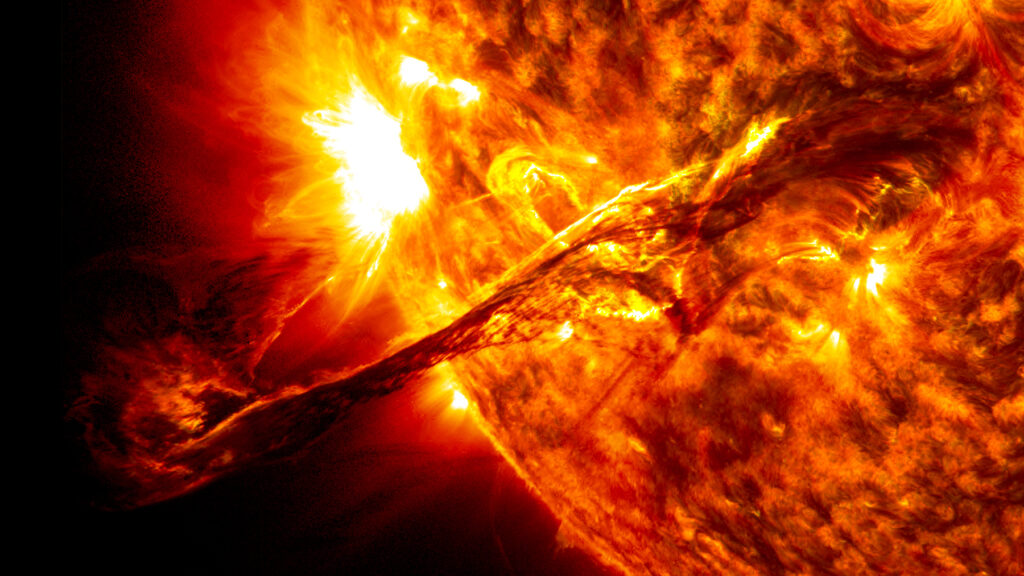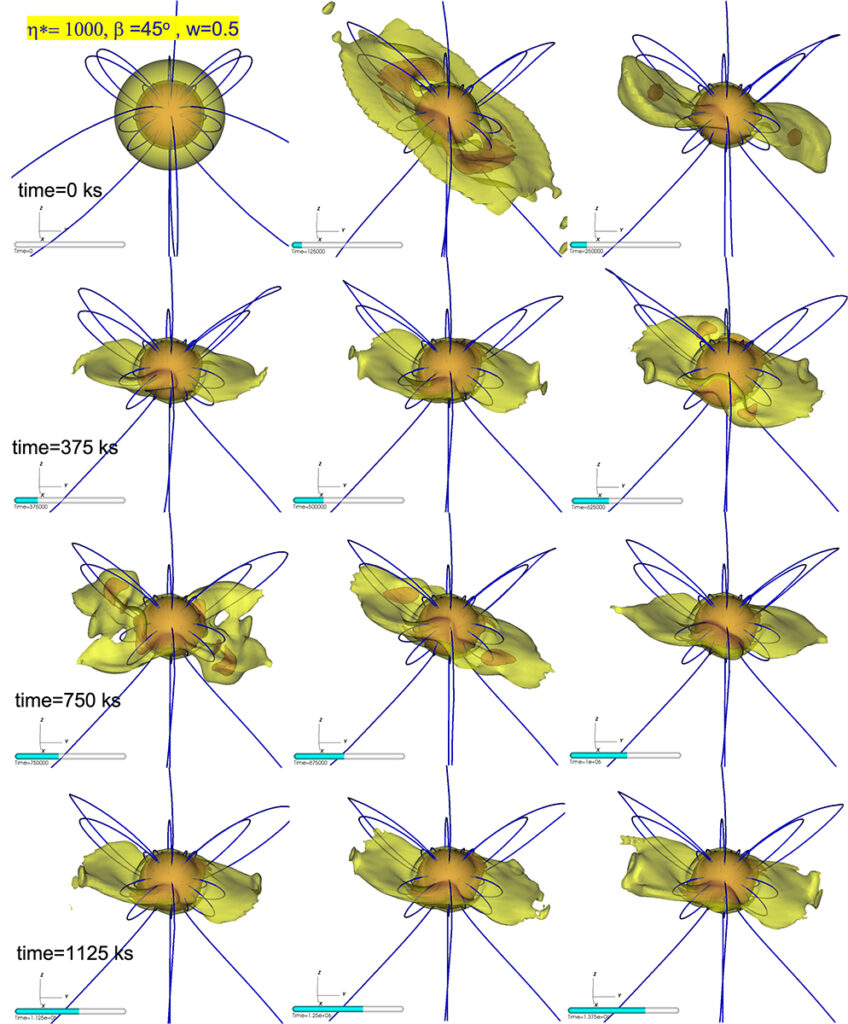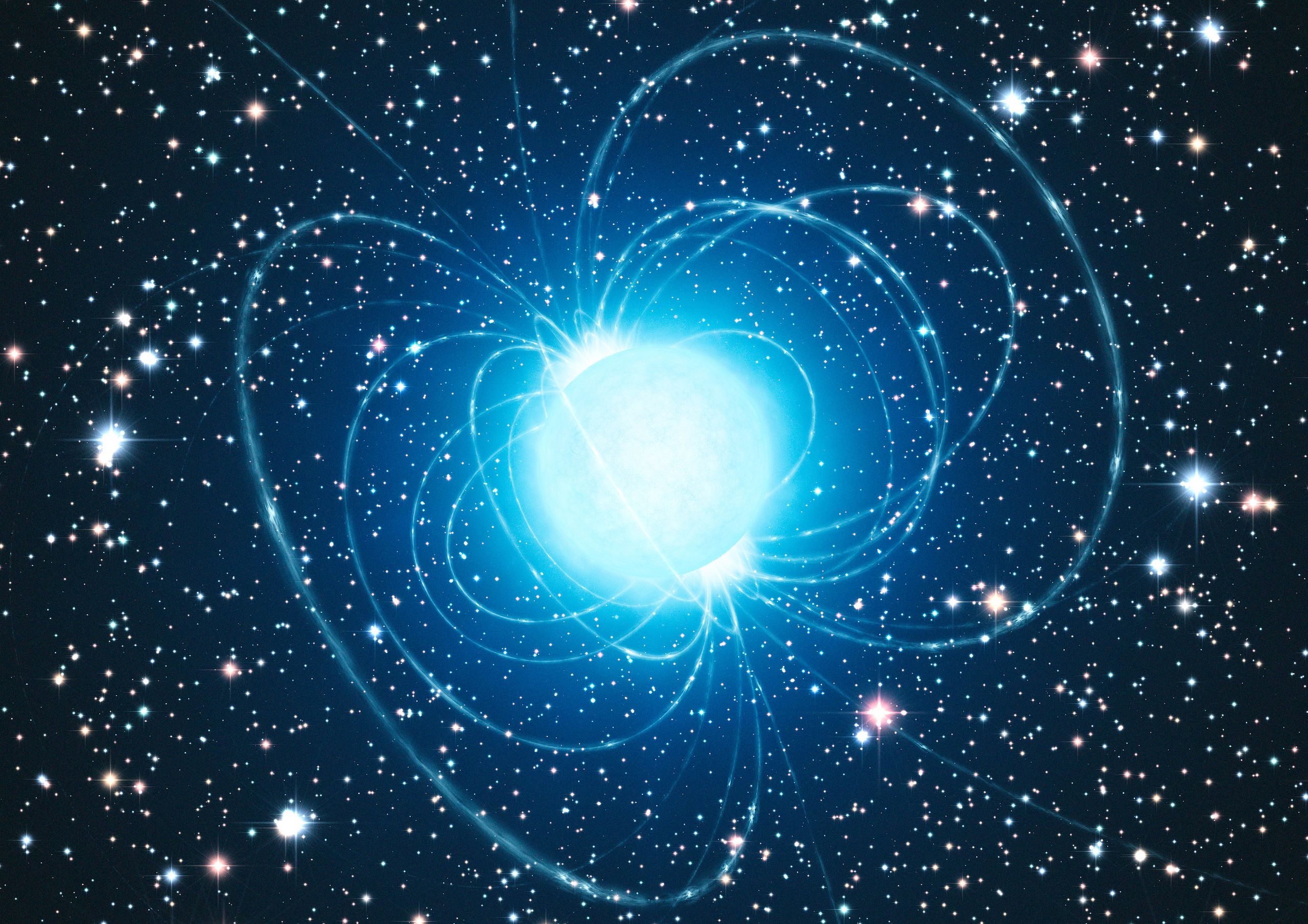An example of a star’s magnetic field. This artist’s impression shows the magnetar in the very rich and young star cluster Westerlund credit: ESO/L. Calçada
The magnetosphere – the region around the Earth dominated by the Earth’s magnetic field – shields our home planet from harmful solar and cosmic particle radiation. The magnetosphere also protects Earth from atmospheric erosion by solar wind. Similarly, stars with a magnetic field also have a magnetosphere. The difference between these two magnetospheres is that the Earth’s magnetic pole is aligned with its rotational axis, while the magnetic pole of stars can often be extremely far off from their rotational axis.
This misalignment of a star’s magnetic pole from its rotational axis creates a magnetosphere with a very complex three-dimensional (3D) structure.
A team of researchers led by Asif ud-Doula from the Pennsylvania State University at Scranton used ACCESS resources to create computer simulations that model this complex 3D structure of the star’s magnetosphere. Their work was published in the Royal Astronomical Society journal in an article titled, 3D MHD models of the centrifugal magnetosphere from a massive star with an oblique dipole field.
Each 3D computer model requires substantial computing time that is equivalent to running a single computer continuously for about seven years – so, parallel or supercomputing is a necessity. Accessing a supercomputer can be highly expensive, but luckily ACCESS gives us gives an opportunity to use computing clusters at no expense. Without such access, our study would have been difficult to accomplish.
Asif ud-Doula, Pennsylvania State University at Scranton [pull-quote]
ud-Doula explained that a clearer understanding of the complex structure of a star’s magnetosphere enables scientists to learn more about the Earth’s magnetosphere and its interaction with the sun’s solar wind.
Solar wind, which occurs in the sun’s magnetosphere when there is a sudden explosion of charged particles on the corona or outermost layer of the sun, results in particles that travel along the magnetic field lines of the sun with immense speed – creating a solar flare.

“Events like this that occur on the sun are the basis for space weather and a better understanding of the magnetosphere helps improve our space weather models, thereby improving our understanding of the universe as a whole,” ud-Doula said. “Powerful solar wind can have detrimental effects on cell phone communication, GPS systems, space technologies and internet services.”
“Having access to a supercomputer allows us to obtain a better understanding of the complex 3D structure of the magnetosphere as it is vital to predicting and combating these effects,” he said.
Through ACCESS resources, the team used Bridges-2 at the Pittsburgh Supercomputing Center to produce and analyze different magnetosphere models. ud-Doula explained that the central aim of this study was to use 3D simulations to characterize and possibly predict the complex magnetosphere structures of rapidly rotating hot-stars. In order to achieve this, the team compared the magnetosphere of stars that have different tilt angles, which is the angle between the magnetic axis and rotational axis of a star.

“We compared 3D computer simulations of magnetosphere structures of two different stars – one with the magnetic pole nearly aligned to the rotational axis at a tilt angle of five degrees and another with the magnetic pole significantly titled away from the rotational axis at a tilt angle of 45 degrees,” ud-Doula said. “The greater the tilt angle of the magnetic pole from the rotational axis, the more complex the magnetosphere.”
He said that by being able to compare the magnetosphere structures of the stars, he was able to thoroughly analyze both types of stars and come to a conclusion about how to characterize a complex rapidly rotating hot-star’s magnetosphere structure.
“We came across one important discovery regarding the factors that contribute to a complex magnetosphere structure: the buildup of gas trapped by the magnetic field distorts that field, thereby creating an unstable structure of the magnetosphere,” ud-Doula said.
Future work in this field is to explore a broader range of tilt angles – including the extreme case of a fully titled magnetic pole at 90 degrees. ud-Doula said that this will be a significant challenge as a 90-degree tilt angle will have the most complex magnetosphere structure of all. Other next steps include using these results to predict changes in the magnetosphere such as emission from trapped hydrogen atoms, or X-rays from gas heated by trapping of stellar wind outflows.
Neha Srinivasan, SDSC Communications, contributed to this story.
Project Details
Resource Provider Institution: Pittsburgh Supercomputing Center (PSC)
Affiliations: Pennsylvania State University at Scranton
Funding Agency: This research was supported by NASA (grant nos. 80NSSC22K0628, TM-22001, GO2-23003X and NAS8-03060). Computational work used the Bridges-2 cluster at the Pittsburgh Supercomputer Center through XSEDE/ACCESS (allocation no. AST200002).
Grant or Allocation Number(s): AST200002
The science story featured here was enabled by the ACCESS program, which is supported by National Science Foundation grants #2138259, #2138286, #2138307, #2137603, and #2138296.


